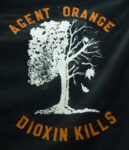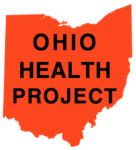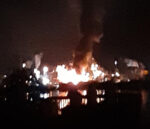- Like
- Digg
- Del
- Tumblr
- VKontakte
- Buffer
- Love This
- Odnoklassniki
- Meneame
- Blogger
- Amazon
- Yahoo Mail
- Gmail
- AOL
- Newsvine
- HackerNews
- Evernote
- MySpace
- Mail.ru
- Viadeo
- Line
- Comments
- Yummly
- SMS
- Viber
- Telegram
- Subscribe
- Skype
- Facebook Messenger
- Kakao
- LiveJournal
- Yammer
- Edgar
- Fintel
- Mix
- Instapaper
- Copy Link
Contact: Robin Blakeman, OVEC: 304-522-0246, robin@ohvec.org
Lea Harper, FWAP: 419-450-7042, wewantcleanwater@gmail.com
Groups Coalesce Against Fracking Activity in Ohio River Valley
HUNTINGTON, W.Va. — Late in November, representatives of citizen groups from West Virginia, Pennsylvania and Ohio gathered in Huntington, W.Va., to discuss the growing threats to the Ohio River Basin, which provides drinking water for five million people.
The impetus for the meeting came from the dramatic rise in the oil and gas industry’s activities and proposals slated for the Ohio River Basin. The industry is proposing to build docks and barge toxic, radioactive waste along the Ohio River. The waste is generated by the deep shale hydraulic fracturing (fracking) method of extracting natural gas. Millions of gallons of liquid waste would be unloaded at dock sites for transport to injection wells in Southeast Ohio. The Coast Guard has yet to announce approval of barge transport for this kind of industrial waste, but such facilities are already being permitted and built along the river.
“Alarmingly, Ohio already has more than two hundred injection wells, most of which are within the Ohio River watershed,” said Andrea Reik of ACFAN (Athens County (Oh.) Fracking Action Network), who was present at the meeting. “According to a Government Accountability Office report on Class II injection wells released this summer, Ohio is the least regulated state for these hydraulic fracturing waste disposal wells.”
(A map of the injection wells so far permitted and/or active in Ohio can be found here.)
“It is alarming how many of these wells are located near, or in the Ohio River watershed,” said Katie O’Neill, a resident of Athens County, Oh.
Also present at the meeting was Bill Hughes with the Wetzel County (W.Va.) Action Group, who noted that landfills near the Ohio River from the northernmost Brook County landfill, then downriver to Parkersburg are accepting massive quantities of drill cuttings from Marcellus Shale fracking activity. The drill cuttings have been shown to emit low-level radioactivity. The radium is water soluble and will continue to create Radon gas.
Hughes has examined more than 3,000 pages of reports on leachates from West Virginia landfills. “This is a very serious issue. Leachate liquid — with concentrated amounts of radioactivity and toxicity — from the landfills near the Ohio can make its way into the river. During the past three years more than 800,000 tons of Marcellus Shale drilling waste has been deposited into landfills near the river, and our government is being willfully ignorant about the contents and effects of the leachate,” Hughes said.
Compounding the barging, injection and landfill threats to the Ohio River Basin, the state of West Virginia has accepted bids to allow hydraulic fracturing for natural gas under portions of the Ohio River. Some of these portions have underlying fault lines; could exacerbate the risk of seismic activity under, or near the riverbed.
“A perfect storm is brewing within the Ohio River watershed that could lead to toxic pollution of tap water for millions of people; our groups are banding together across state lines to identify both the threats to river and means we can use to reduce these threats. We would welcome more groups from other states in the Ohio River basin,” said Robin Blakeman, with the Ohio Valley Environmental Coalition (OVEC).
Terry Lodge, an attorney who is assisting affected residents, said, “This cross-boundaries coming together of activist grassroots to combat the increasing madness is utterly needed.”
Attending the meeting were representatives of FracTacker Alliance (Camp Hill, Pa.), OVEC, ACFAN, Wetzel County Action Group, Freshwater Accountability Project (Grand Rapids, Oh.), WV Chapter of the Sierra Club, Buckeye Forest Council (Columbus, Oh.) and Jefferson County (Oh.) Citizens for Environmental Truth. Representatives of several other groups, including The Guardians of the West Fork (W.Va.) are participating in subsequent discussions.
The groups are carrying out some initial shared research goals and will meet again in January. For information on the next meeting, contact OVEC organizer Robin Blakeman at robin@ohvec.org or Lea Harper, Managing Director, of FreshWater Accountability Project (FWAP.org) at wewantcleanwater@gmail.com
###








